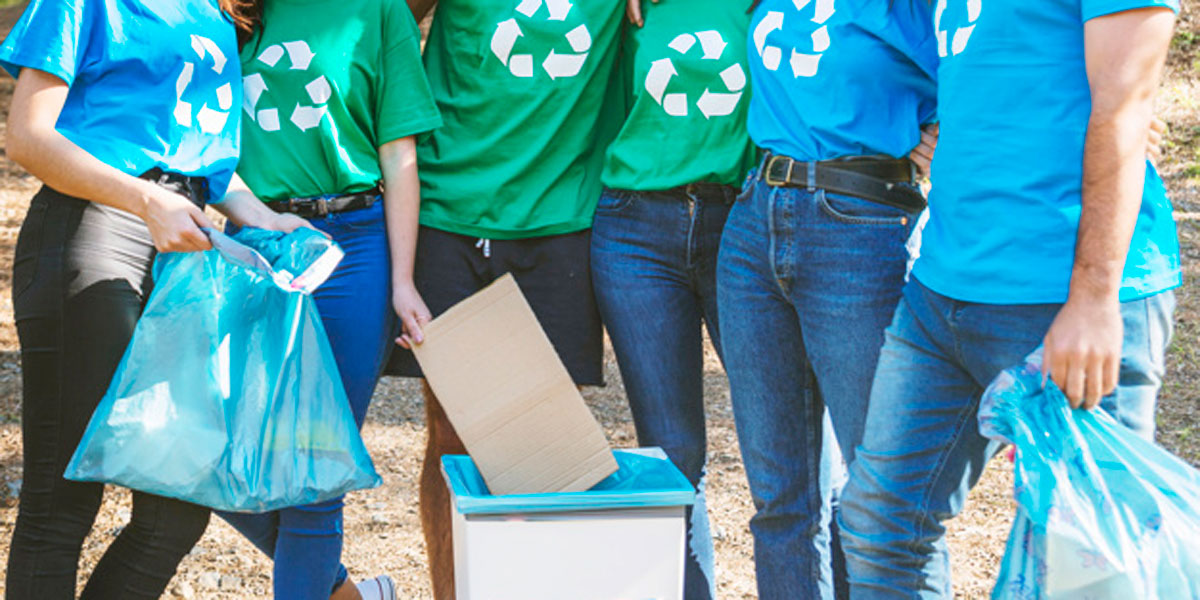What Happens To Your Old Clothes When You Throw Them Out?

Sundried recently ran a poll asking the public where they think their old clothing ends up when they throw it out. Is this something you've ever thought about? 25% of respondents admitted they've never thought about it. Here's what really happens to your old clothes when you throw them out.
What really happens to donated clothes?
According to the BBC, in the UK alone we throw out over a million tonnes of clothing every year. That's a lot of waste! We may not think of clothing as waste, but it ends up in landfill just like all the other rubbish we throw out and sits there for hundreds of years, contributing to the global pollution crisis. Understandably, a lot of people decide to donate their clothes to charity shops or clothes banks in order to prevent this waste and in the hopes their old clothes could potentially help the less fortunate. But what really happens to donated clothes?
British charity WRAP (Waste & Resources Action Programme) estimates that over 70% of donated clothes worldwide get exported overseas in an expensive and polluting second-hand garment trade . According to figures released by the UN, Britain is the second largest exporter of second-hand clothing, after the USA. The UK exports over 351,000 tons of old clothes – with an export value of £380m – to countries like Poland, Pakistan, and Ghana.
What once started as donations end up as tradable goods.

Do clothes get recycled?
Textile and garment recycling is hugely on the rise as global interest in environmental consciousness increases. Clothes that are thrown out by everyday people become what is known as 'post-consumer' and these post-consumer textiles can have a huge value to those who know what to do with them.
When you throw out your clothing to be recycled, it will either be reusable or not reusable, depending on the condition it is in. If it is still in a wearable condition, it might be sold on to third world countries as outlined above. If it is in bad condition – ripped, stained, or otherwise damaged – it will be sorted into rags, scraps, and fibrous material which can be recycled, sometimes into new clothing.
Clothing that is sent to be recycled gets collected from the donation bins or shops and is processed at dedicated facilities. At these processing facilities, the recycled clothes are shredded, treated and then re-purposed. The material can be used for acoustic dampening materials, carpet padding, insulation, or turned into rags for the automobile industry.
Because the recycling process stretches and weakens the fibers, only a small percentage of post-consumer polyester can be used to make new clothing. H&M’s sustainability report for 2016 showed that only 0.7 percent of their fabrics were created from recycled materials.
Old clothing is processed and turned into padding, insulation, and rags. Only a tiny percentage is turned into new clothing.

How can you be more environmentally friendly?
One of the best ways to be environmentally friendly is not to buy too many new clothes each year and wear what you do own as much as possible before throwing it out. Avoid buying very cheap clothing as this is more likely to be mass-produced and poor quality, therefore lasting less time and being thrown out more readily. If you spend a little more on quality clothing, you're more likely to care for it and want to get as many wears out of it as possible.
At Sundried, all of our activewear is made with longevity in mind so that it can last as long as possible. Our clothing will retain its colour and shape wash after wash, wear after wear, so that you can keep it for years.
Sundried also has a range of biodegradable t-shirts which biodegrade in 3 short years when exposed to the anaerobic environment of landfill. This means that once you do throw out your t-shirt, you can be safe in the knowledge that it won't be polluting the planet for hundreds of years.

These fitness tops by Sundried are biodegradable
Another way to be more environmentally friendly is to buy clothing made from recycled raw materials like plastic bottles or coffee grounds. At Sundried, we offer two collections made from recycled materials which help to reduce waste and clean up the planet. Our Eco Core range is made from 100% recycled plastic bottles and the innovative fabric dries 200 times faster than cotton, meaning the wearer can stay dry and comfortable even during a sweaty workout. The fabric is also super soft and kind to the skin, making it perfect for activewear.
Sundried's Eco Charge range is made from 100% recycled coffee grounds and features incredible sports performance qualities such as anti-odour and UV protection.
So next time you're thinking of buying new activewear, why not go for the eco-friendly choices and see how it can benefit you?

